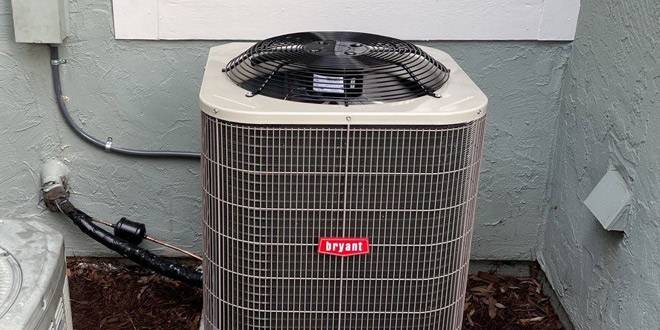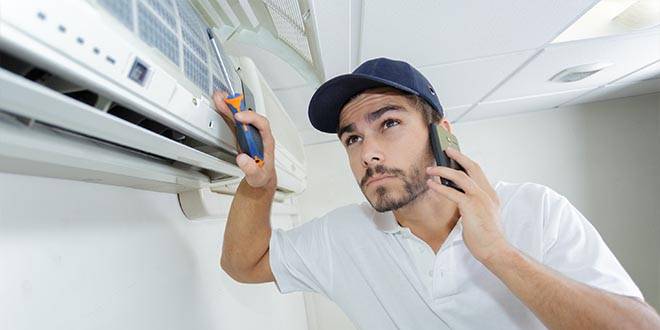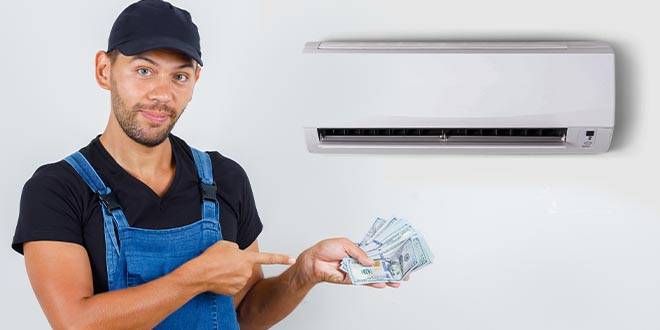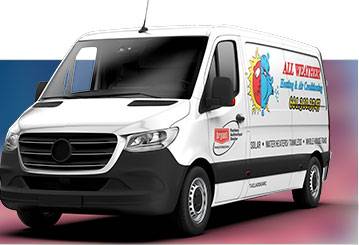
Dreading the heating and cooling bill? You’re not alone. But before you resign yourself to a summer of sweat and a winter of shivers, take a deep breath! This post dives deep into the world of heating and AC costs per square foot, offering a clear and budget-friendly breakdown.
We’ll uncover the truth behind the “shockingly affordable” claim, explore the factors influencing your final bill, and equip you with valuable tips for keeping your energy costs under control. So, grab your calculator (or don’t; we’ve got you covered!), and let’s explore the world of affordable comfort together!
Understanding Heating and Air Conditioning Costs
Before we delve into the specifics, it’s essential to grasp what we mean by “heating and air conditioning cost per square foot.” This metric is a comprehensive way to understand the overall expenses involved in heating and cooling a property. It takes into account not only the initial purchase and HVAC installation cost but also the ongoing expenses related to energy consumption and maintenance. Understanding this cost is crucial for budgeting, especially for new installations or when planning upgrades to more efficient systems.

Several factors can significantly influence these costs:
- Regional Climate Variations: The area you live in plays a pivotal role. Homes in regions with extreme weather conditions—be it hot or cold—will naturally incur higher heating and air conditioning costs due to the increased demand for energy to maintain comfortable indoor temperatures.
- Efficiency of the System: The energy efficiency of a heating or air conditioning unit is measured by its SEER (Seasonal Energy Efficiency Ratio) for air conditioners and AFUE (Annual Fuel Utilization Efficiency) for HVAC systems. Higher efficiency ratings typically mean higher upfront costs but result in lower energy bills over time.
- Type of System: The choice between different types of systems (e.g., central air conditioner, heat pumps, ductless mini-splits) also affects costs. Each has its own operational and HVAC replacement cost, influenced by the specific needs of the property and the system’s energy efficiency.
- Quality of Insulation: Proper insulation is key to minimizing energy loss. Homes with better insulation require less energy to heat and cool, directly impacting the cost per square foot for heating and air conditioning. This factor is often overlooked but can lead to significant savings.
Understanding these influencing factors is the first step in estimating your heating and air conditioning costs per square foot. It sets the stage for deeper insights into how you can plan your budget and make choices that align with your financial and comfort needs.
In the next section, we’ll explore the average costs associated with heating and air conditioning per square foot and discuss how these factors play into those numbers, helping you make informed decisions for your home or business.
Average Costs and What Influences Them
Navigating the costs associated with heating and air conditioning can often feel like charting unknown territory. To bring some clarity, let’s discuss the average cost ranges you might encounter and delve into the variables that can sway these figures.
Average Cost Ranges
| Cost Type | Average Cost per Square Foot | Influencing Factors |
| Air Conditioning | $0.25 to $0.50 | Energy source, system efficiency, and specific circumstances |
| Heating | $0.10 to $0.30 | Energy source, system efficiency, and specific circumstances |
On average, heating and air conditioning costs per square foot can vary widely depending on several influencing factors mentioned previously. For air conditioning, the national average can range from $0.25 to $0.50 per square foot for operation costs, while heating can span from $0.10 to $0.30 per square foot, depending on the energy source and system efficiency. However, these are broad estimates, and the actual costs can differ based on your specific circumstances.
Influencing Factors:
- Energy Efficiency Ratings: Systems with higher SEER (for cooling) and AFUE (for heating) ratings generally come with a higher price tag. However, they consume less energy, which means lower utility bills. Investing in a central air system with a high-efficiency rating can lead to substantial savings over the system’s lifespan, effectively reducing the cost per square foot over time.
- System Type and Installation Complexity: The choice between a central air conditioning system, heat pumps, and ductless mini-splits, among others, impacts both the initial installation cost and the ongoing energy expenses. For example, ductless mini-splits might have higher upfront costs but offer lower operating costs due to their efficiency and the ability to zone your heating and cooling.
- Home Insulation and Sealing: A well-insulated and sealed home requires less energy to heat and cool, directly influencing the cost per square foot. Investing in insulation and proper sealing can significantly reduce these costs, making this an important area to consider for both new installations and existing systems.
- Local Climate: The harsher the climate, the more you’ll spend on heating and cooling. Homes in areas with extreme temperatures will see higher usage rates, directly impacting the cost per square foot. Choosing systems designed for efficiency in specific climate conditions can mitigate these costs.
Understanding these costs and what influences them is crucial for budgeting accurately and making informed decisions about your heating and air conditioning needs. By considering these factors, you can better anticipate your expenses and choose a system that offers both comfort and cost-effectiveness.
Next, we will guide you through calculating your specific heating and air conditioning costs, helping you to tailor your budget with greater precision.
How to Calculate Your Heating and AC Costs
Calculating the heating and air conditioning costs for your property doesn’t have to be a daunting task. With a basic understanding of the factors involved and some simple math, you can get a rough estimate of your expected expenses. This calculation can be invaluable for budgeting, planning upgrades, or simply evaluating the efficiency of your current system.

Step-by-Step Guide to Calculation
- Determine Your Space’s Square Footage: The first step is to know the total square footage of the area you need to heat or cool. This figure is crucial as it directly impacts the calculation of your costs per square foot.
- Understand the Average Costs: Based on the previous section, remember the average costs for heating and air conditioning per square foot. These averages will serve as a baseline for your calculations.
- Adjust for Efficiency and Climate: If you know the SEER rating of your AC unit or the AFUE rating of your heating system, you can adjust the average costs to better reflect your situation. Likewise, consider your regional climate. If you live in an area with extreme temperatures, adjust the cost slightly higher to account for the increased demand on your system.
- Factor in Insulation Quality: Evaluate the insulation quality of your property. If you have recently upgraded insulation or have a newer home that meets high energy efficiency standards, you might lower the cost per square foot in your calculations to reflect the reduced energy demand.
- Calculate the Estimated Costs: Multiply the total square footage by the adjusted cost per square foot to get an estimated total cost for heating and air conditioning your space.
Example Calculation
Let’s say you have a 2,000-square-foot home with an AC system with a SEER rating above the national average, and you live in a moderately warm climate. If the average cost for air conditioning per square foot is $0.35, but due to your efficient system and moderate climate, you adjust this down to $0.30. Your estimated cooling cost would be 2,000 sq ft * $0.30 = $600 for the cooling season.
Similarly, for heating, if the average cost is $0.20 per square foot, but your home is well-insulated, reducing this cost to $0.15 per square foot, your heating cost for the space would be 2,000 sq ft * $0.15 = $300 for the heating season.
Importance of Professional Assessment
While this guide provides a rough estimate, it’s important to note that numerous variables can affect these costs. For the most accurate assessment, we recommend a professional evaluation. An expert can consider all factors, including the specific details of your home and HVAC system, to provide a precise calculation. This assessment can also identify potential areas for efficiency improvements, further reducing your costs in the long term.
In the next section, we’ll explore strategies to reduce your heating and air conditioning costs, ensuring you get the most out of your HVAC system without overspending.
How to Reduce Your Heating and AC Costs
Reducing your heating and air conditioning costs is not only beneficial for your wallet but also for the environment. Efficient energy use helps lower overall consumption, contributing to a greener planet. Here are practical tips and strategies to minimize these costs, ensuring your HVAC system operates at peak efficiency without compromising comfort.
Regular Maintenance
One of the most effective ways to keep your HVAC system running efficiently is regular maintenance. This includes cleaning or replacing filters, checking for leaks in ductwork, and ensuring all components are in good working condition. Regular tune-ups can prevent minor issues from turning into major problems, saving you from unexpected repair costs and high energy bills.
Upgrade to Energy-Efficient Systems
Modern HVAC systems are designed with energy efficiency in mind. Upgrading to a system with a higher SEER rating for air conditioning or a higher AFUE rating for heating can significantly reduce your energy consumption. Although the upfront cost may be higher, the long-term savings on your energy bills can offset this investment over time.

Improve Home Insulation
Enhancing your home’s insulation and sealing leaks around doors and windows can drastically reduce the amount of energy required to maintain comfortable temperatures. Proper insulation keeps warm air inside during the winter and cool air inside during the summer, reducing the workload on your HVAC system.
Install Programmable Thermostats
Programmable thermostats allow you to set your heating and cooling systems to operate only when needed. By adjusting temperatures based on your schedule, you can avoid wasting energy heating or cooling an empty home. Smart thermostats can even learn your habits and adjust settings automatically for maximum efficiency and comfort.
Consider Zoning Systems
Zoning systems enable you to control the temperature in different areas of your home independently. This means you can heat or cool only the spaces that are in use rather than spending energy on unoccupied rooms. Zoning systems can be particularly beneficial in larger homes with varying occupancy and temperature preferences.
Leveraging Our Services to Save
At All Weather Heating & Air Conditioning, we understand the importance of efficient heating and cooling solutions. Our Energy Savings Agreement (ESA) Program is designed to provide you with regular maintenance, ensuring your system operates at its best year-round. By enrolling in this program, you can enjoy peace of mind knowing that your HVAC system is being cared for by professionals, potentially saving you significant amounts on your heating and air conditioning costs.
Additionally, we offer a range of energy-efficient systems and upgrades tailored to meet your specific needs. Our team of experts can assess your home and recommend solutions that will provide the comfort you desire while keeping your energy bills in check.
In the next section, we will explore financing options available for those looking to invest in a new, energy-efficient HVAC system, making it easier to manage the upfront costs while enjoying long-term savings.
Financing Options for Your HVAC System
Investing in a new, energy-efficient HVAC system can be a significant financial decision. However, the long-term savings on energy bills and the increased comfort of your home often outweigh the initial expense. To make this investment more manageable, we offer several financing options designed to fit your budget and financial situation.
Understanding Financing Solutions
We partner with reputable financial institutions to provide flexible financing options for our customers. These options are designed to help spread the cost of your new HVAC system over time, making it more affordable to upgrade to a more efficient unit without a large upfront payment. Financing is subject to approved credit, ensuring that we can find a solution that works for you.
Why Consider Financing Your HVAC?
- Immediate Savings: By financing and installing a more efficient system, you can start saving on your energy bills right away, even as you pay for the system over time.
- Upgrade Sooner: Financing allows you to upgrade your HVAC system sooner rather than later, ensuring you enjoy enhanced comfort and efficiency without waiting.
- Flexible Payment Options: With various financing plans available, you can choose the one that best fits your financial situation, including options with competitive interest rates and payment terms.
Our Financing Partners
We’ve partnered with three of the most trusted financial institutions to offer you the best financing options available:
- Wells Fargo: A household name offering special financing terms for home improvement projects, including HVAC upgrades.
- Travis Credit Union: A local credit union known for its community focus and competitive rates for its members.
- Synchrony Financial: A leader in consumer financial services, offering flexible financing options for home-related services and products.
Each of these partners has been carefully selected for their reliability, competitive rates, and customer service. Our team can guide you through the application process, helping you understand each option and how it aligns with your financial goals and needs.
Take Action Today ????
Ready to enhance your home’s comfort and slash your energy bills? Let All Weather Heating & Air Conditioning guide you through your HVAC upgrade journey, from choosing the right system to flexible financing options. Embrace efficiency and savings today—reach out to us and start your path to a more comfortable, cost-effective home! ????????

